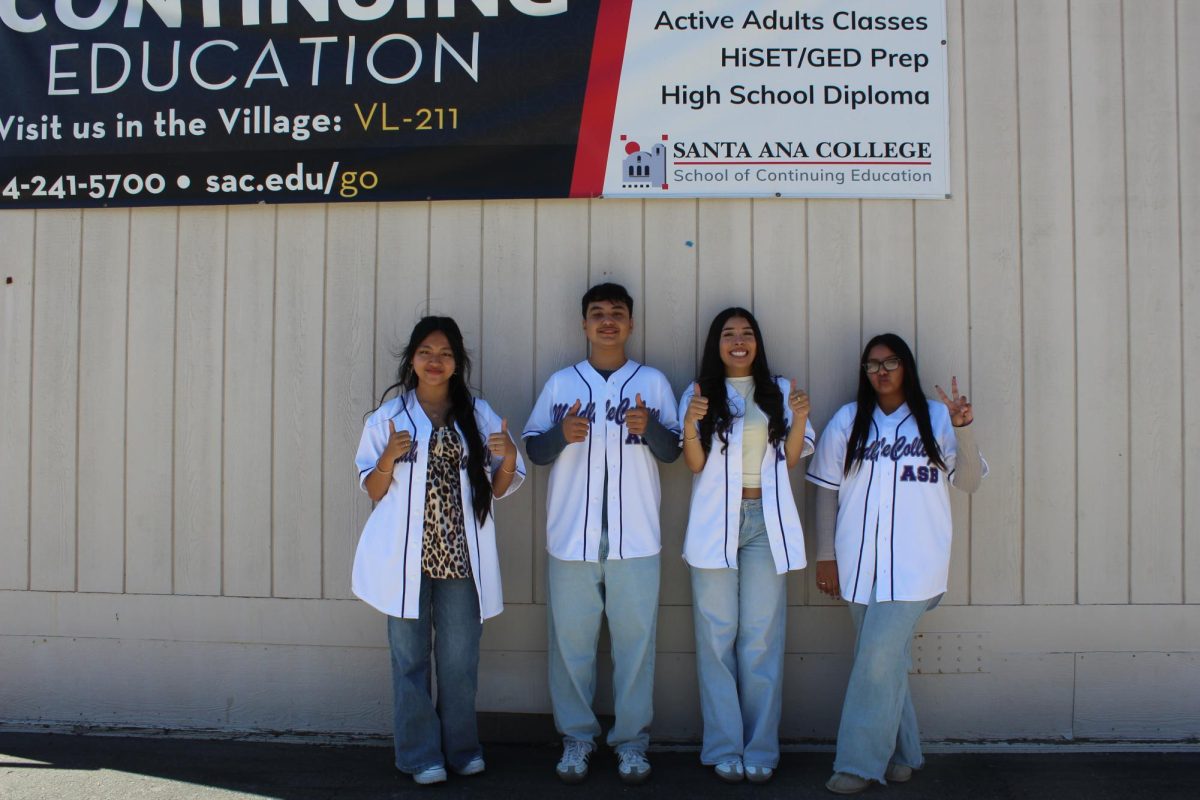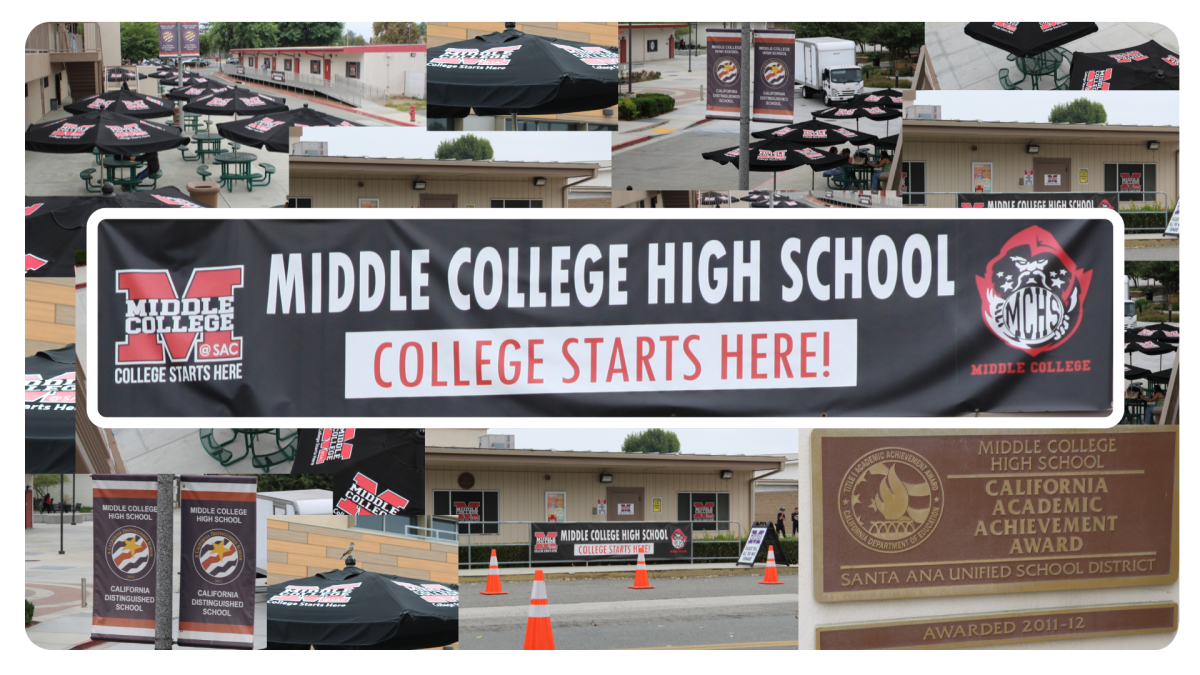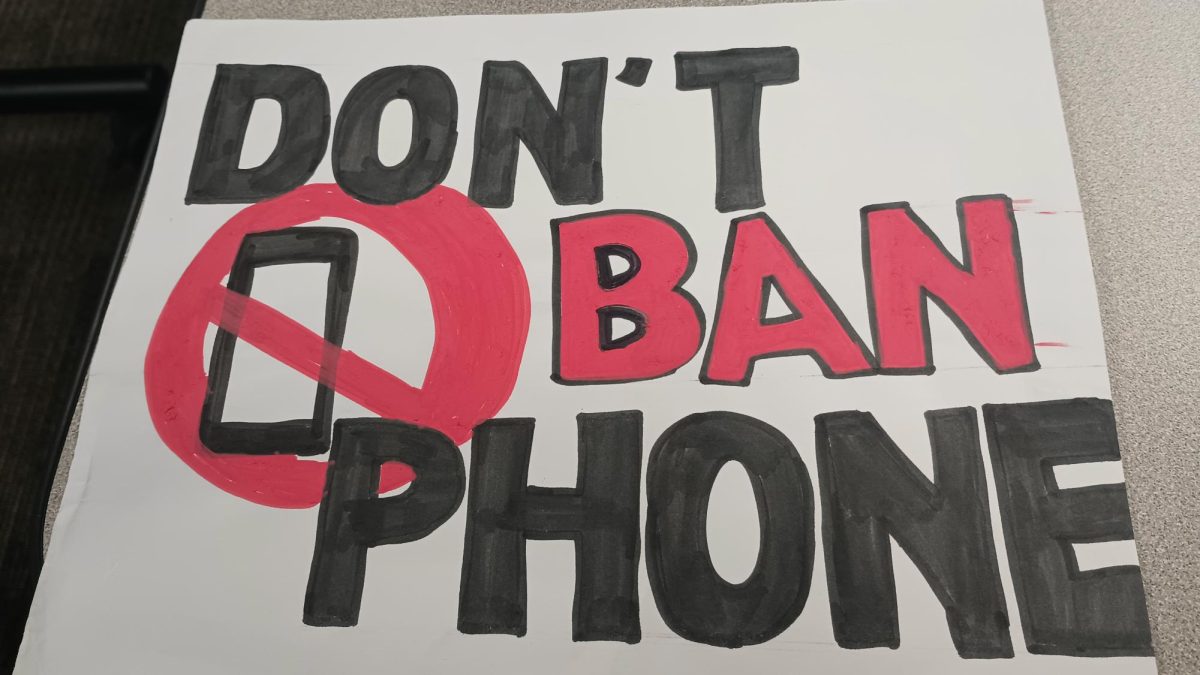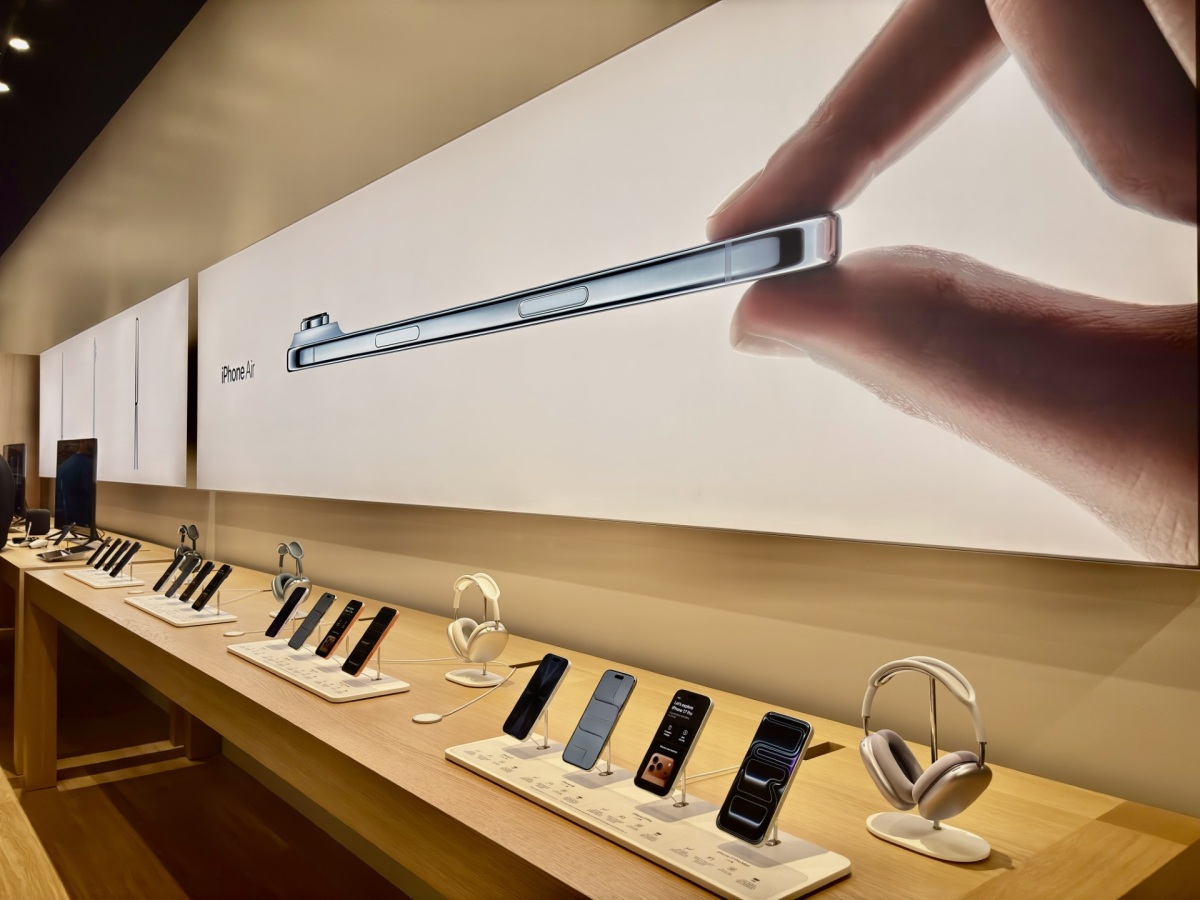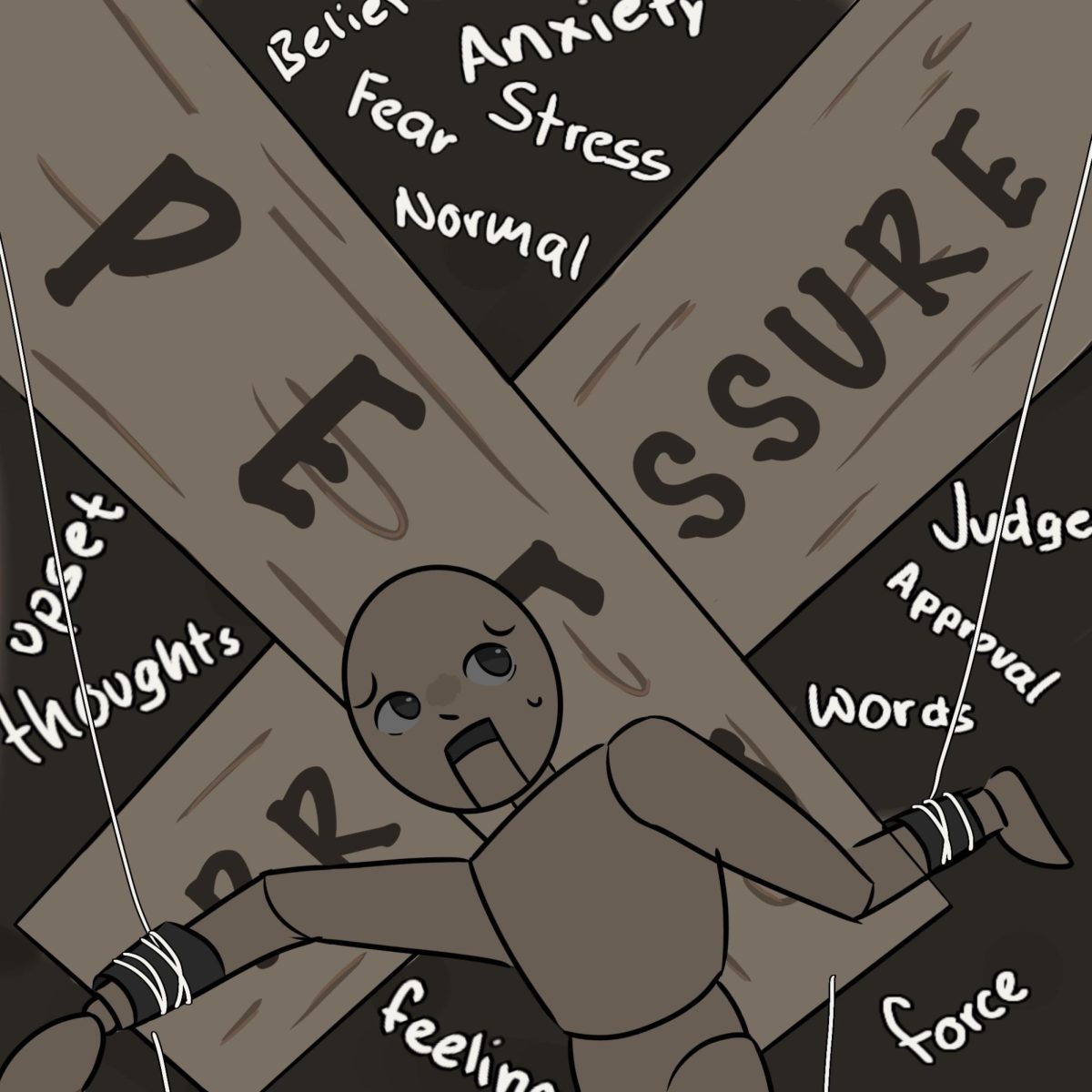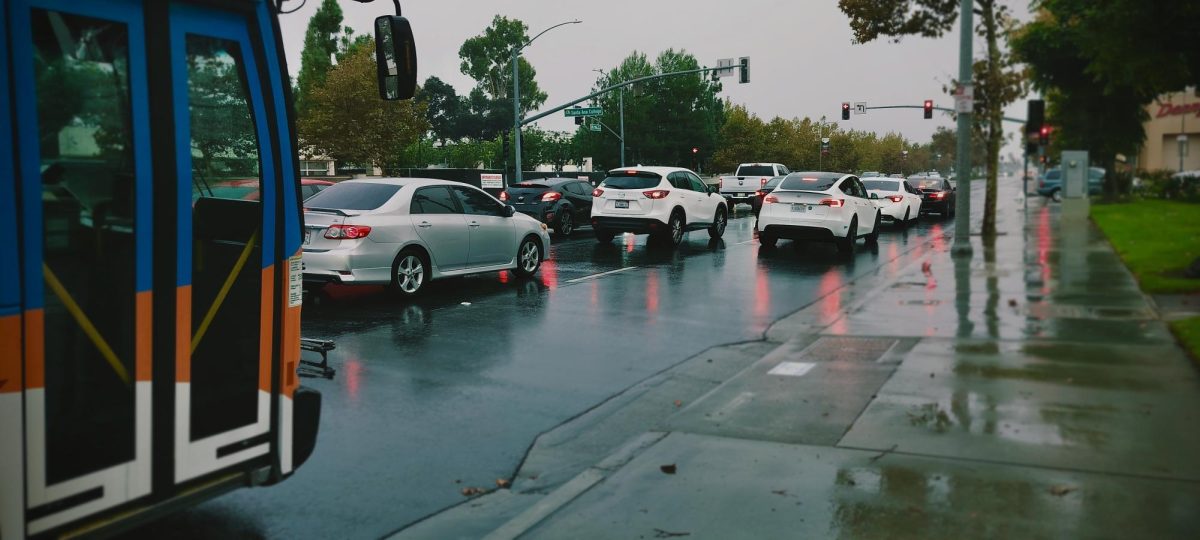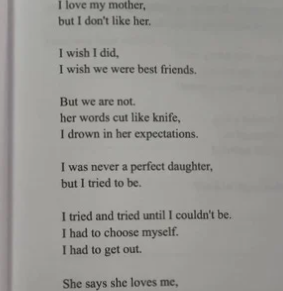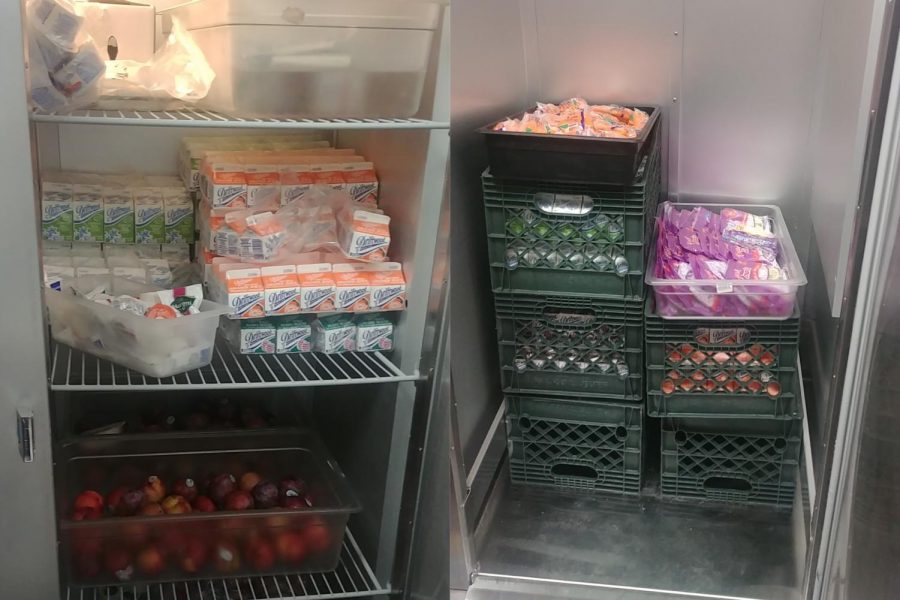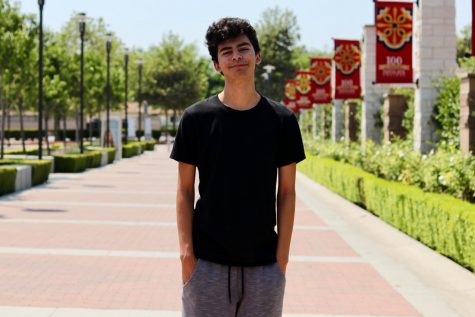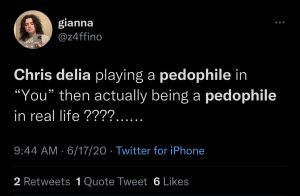Does MCHS waste too much food?
Wasted food around campus.
October 12, 2018
Anybody who has walked around campus after lunch has noticed the obvious: trash and food scattered about the tables. From the bags of fruit and juice cartons that can be seen, it leaves students to wonder how many uneaten fruits, vegetables, and juices are thrown away. There doesn’t seem to be much discussion about food waste on campus amongst the student body or administration. Taking a closer look at the issue, it turns out that the reality of food waste on campus is rather surprising.
Middle College’s lunch coordinator, Mario Nieto, was able to hand over a lot of information about our school lunches and waste. First, it must be understood that there are set requirements for all students receiving lunch. All students must take three “items” that fulfill a food group requirement: grains, protein, dairy, etc. This means that all students must take one entree item and a fruit or a juice. A lot of students are under the assumption that they need to take both a fruit and a juice, leading to some students taking a fruit or vegetable that will inevitably be thrown away. Anywhere from 250 to a maximum of about 280 lunches are served every day with an average of about 250 per day. Out of the 322 students at Middle College, only about 80 percent of them get lunch and of those 255 students, about 16 people get a second lunch. No matter what, there will always be food left over because our lunch staff have to ensure that there is enough food for every student to eat and for some to get second lunches. According to Nieto, most of this extra food is thrown away, with breakfast producing more waste because they are unable to keep hot foods after. Cold foods can easily be refrigerated and saved for the next day, but we have no way of keeping the hot foods warm enough to meet the regulations that say they must be kept at 135 degrees. However, due to our school being so small, our waste ends up being about 15-30 food items a day (5-11 percent of our food). While these statistics present an optimistic case for our lunch waste, there is another part of the picture: thrown away and uneaten lunches.
Middle College’s biology teacher, Susan Groff, along with a team of Global Studies students, conducted a food waste survey last year where they collected food from trash cans for one day and counted how much was wasted. This table shows how much food of each category was collected from the trash cans and how much of it was wasted, according to their data:
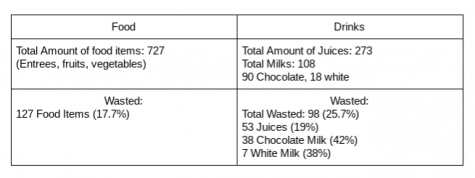
As shown by this data, it is clear that Middle College Students are throwing away a considerable amount of food, and especially so their drinks. These numbers put our food waste into a better perspective as they show that we waste almost 18 percent of our food items and about 25 percent of our drinks on a typical day. These numbers may vary by 5 percent or so.
Although these numbers may seem frightening, it turns out that Middle College actually does a pretty good job at not wasting food, especially compared to larger high schools and the rest of the United States, which wastes 40% of food, according to Ms. Groff. As for schools, according to Nieto, who has worked in the cafeterias of large high schools in the district, schools with thousands of students have to order a lot of excess food to compensate for the general student body as well as those who get a second lunch. This means that over a hundred or more meals can be wasted every day. In Nieto’s opinion, we do not waste as much as other schools, even in proportionality. However, food waste as a percentage was not able to be obtained for comparison to larger high schools. Our principal, Mr. Voight, agreed with him on this matter as he has observed that we don’t waste as much as other schools. However, there is a lot that we can do in order to waste less food as we still do waste a considerable amount.
A large issue that Nieto brought up is that Nutrition Services, our provider of lunches, rarely if ever asks students what they like and what they don’t like. On the Nutrition Services website, they claim they “make student focused decisions” as one of their core values. However, Nieto made a point that nutrition never polls the students and asks them what they like and dislike. Nieto also understands that “It’s hard for nutrition, for us, to please every other kid,” but it would definitely make a difference if student opinions were polled and taken into account when putting together lunch menus. This is significant as students may take a lunch they don’t necessarily like and throw it away just so they can eat a fruit or drink a juice or vice-versa. To add on to this point, Mr. Voight claimed that “we force people to take what they don’t necessarily like, and that’s part of the problem.” As far as a solution goes, Mr. Voight brought up the idea of having a table where students can leave unwanted food for other students, who may not have food at home, to take the food with them. Legally, the school isn’t allowed to give leftovers directly to students, but students giving food to other students is fair game. Mrs. Groff and her team of Eco Club students had a similar idea last year, but it never got off the ground.
Something definitely has to be done about food waste on campus, whatever that may be. As a small school, it is so much easier for us to cut back on waste and make sure that our student body is aware that we throw away too much food that can serve other purposes.

